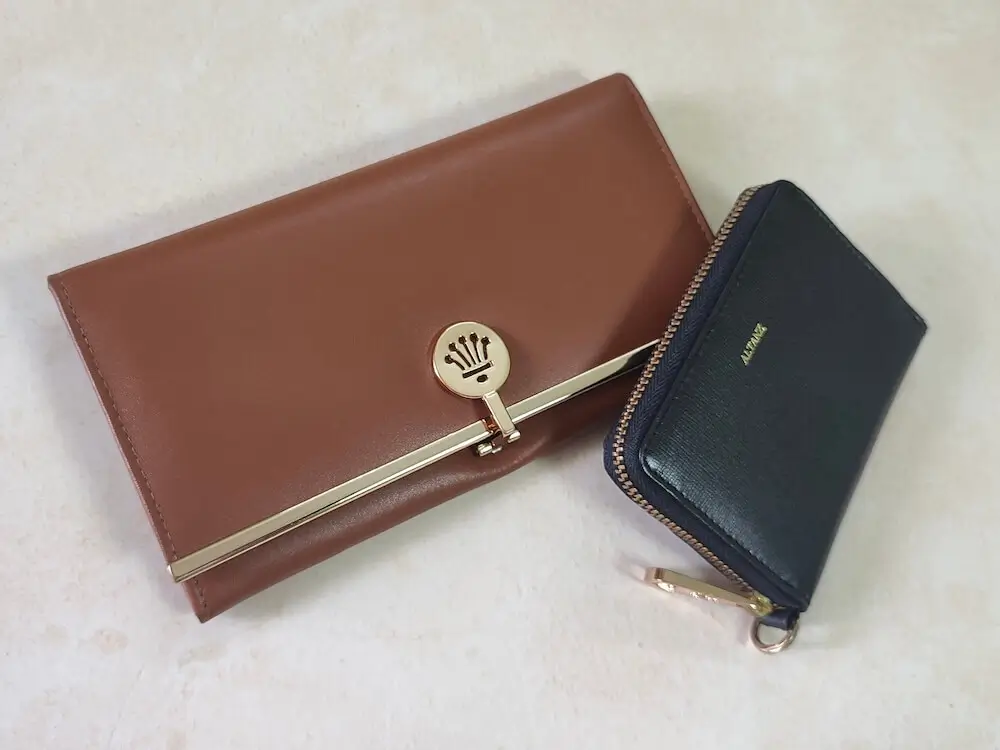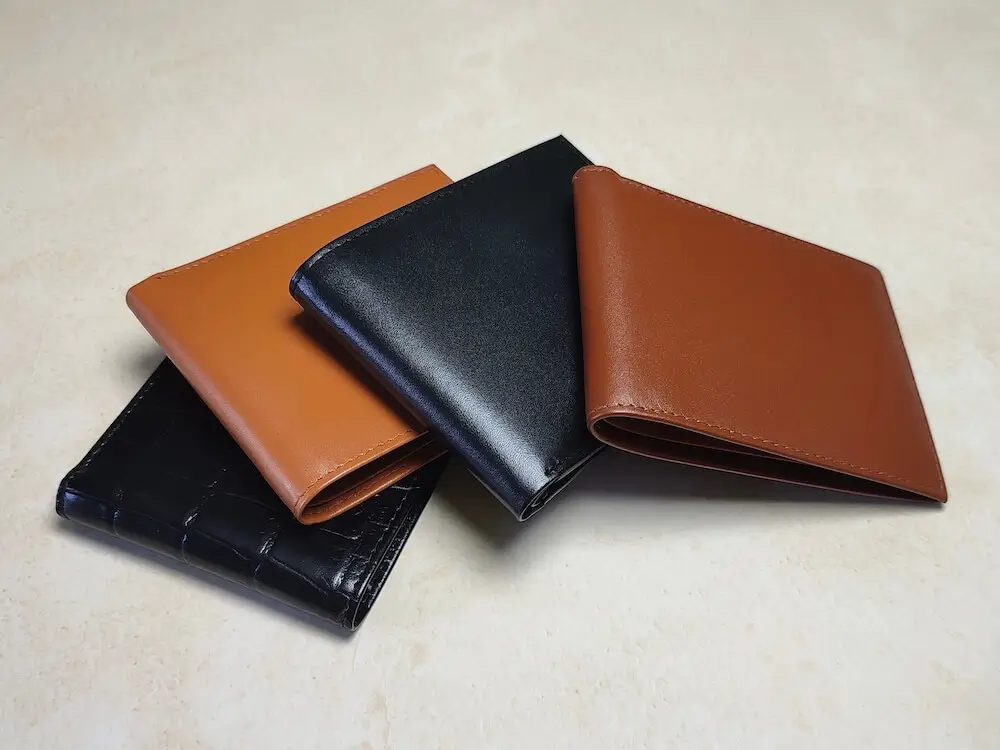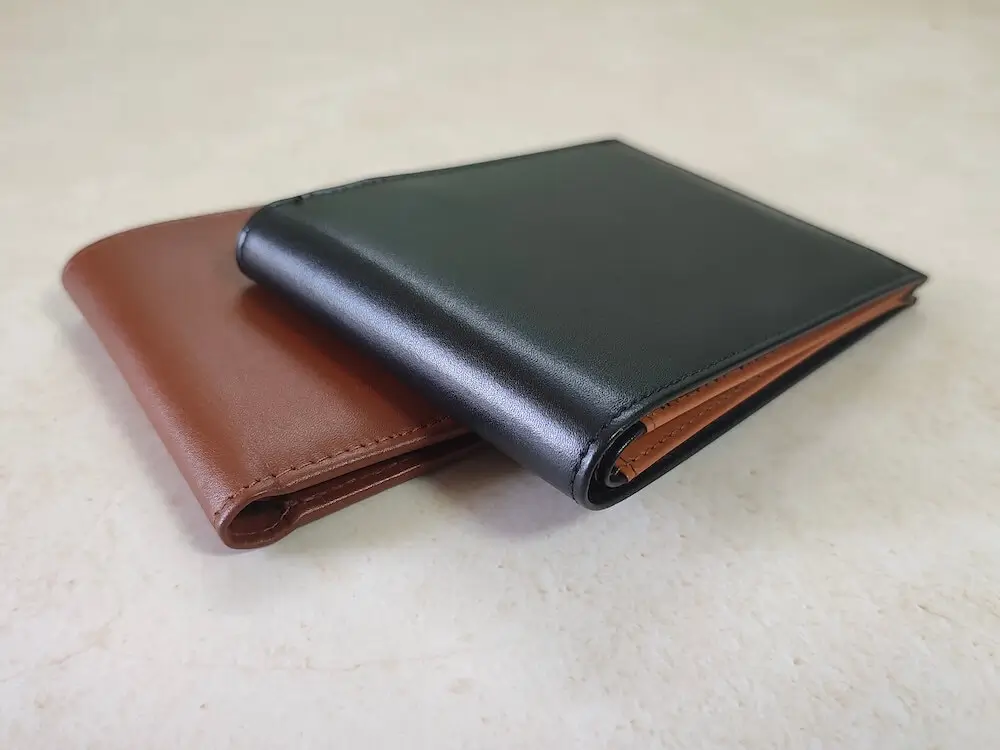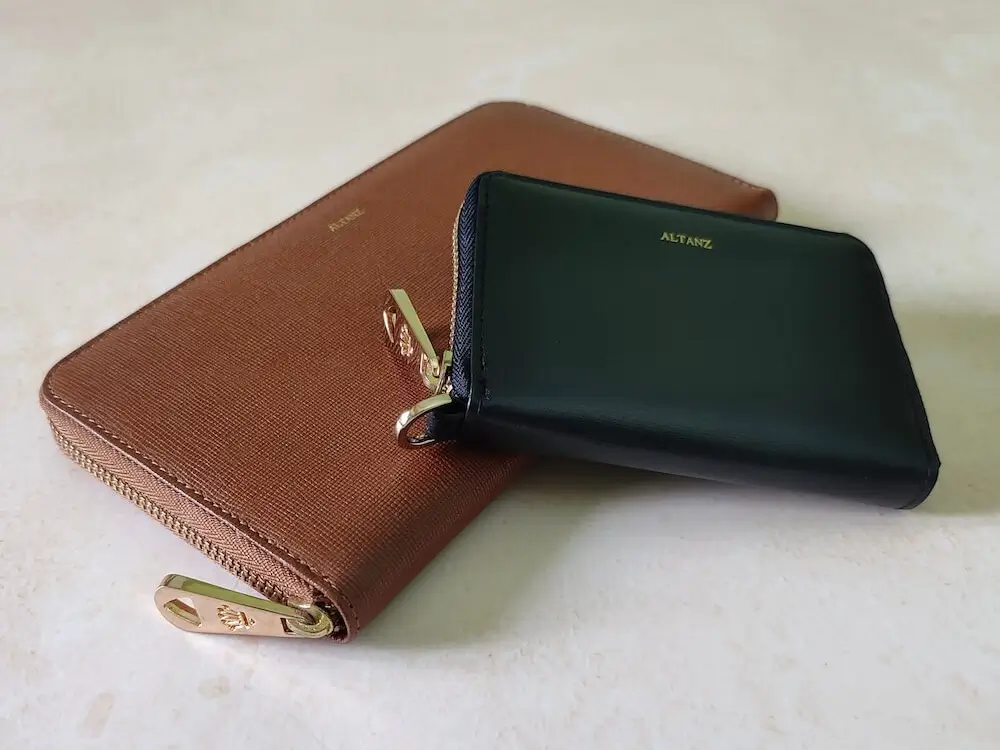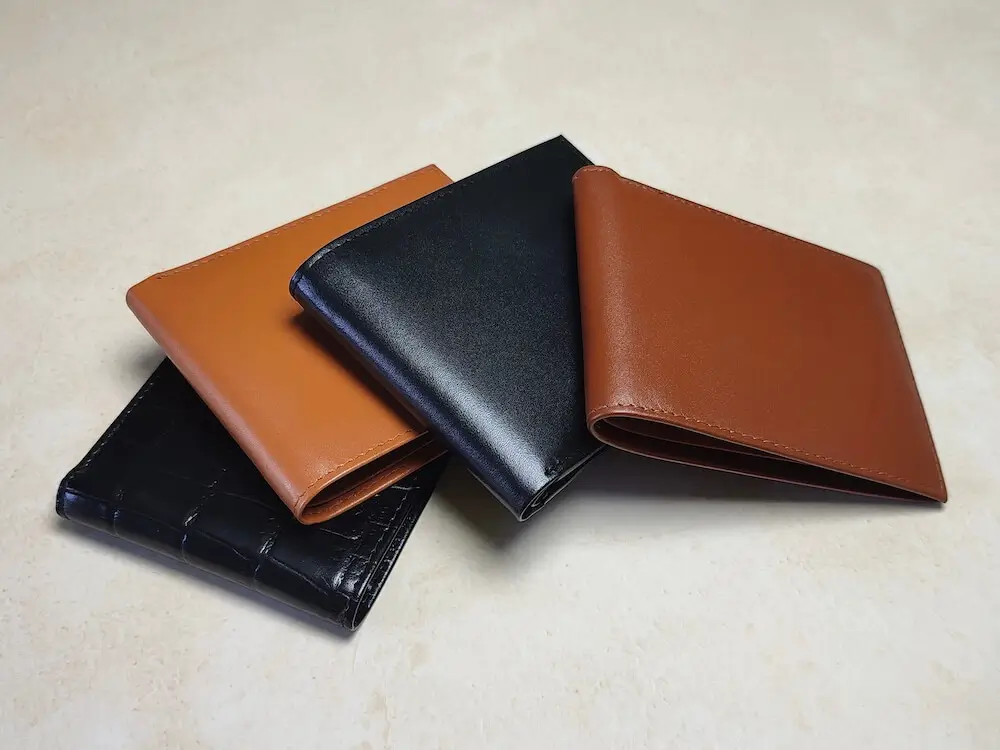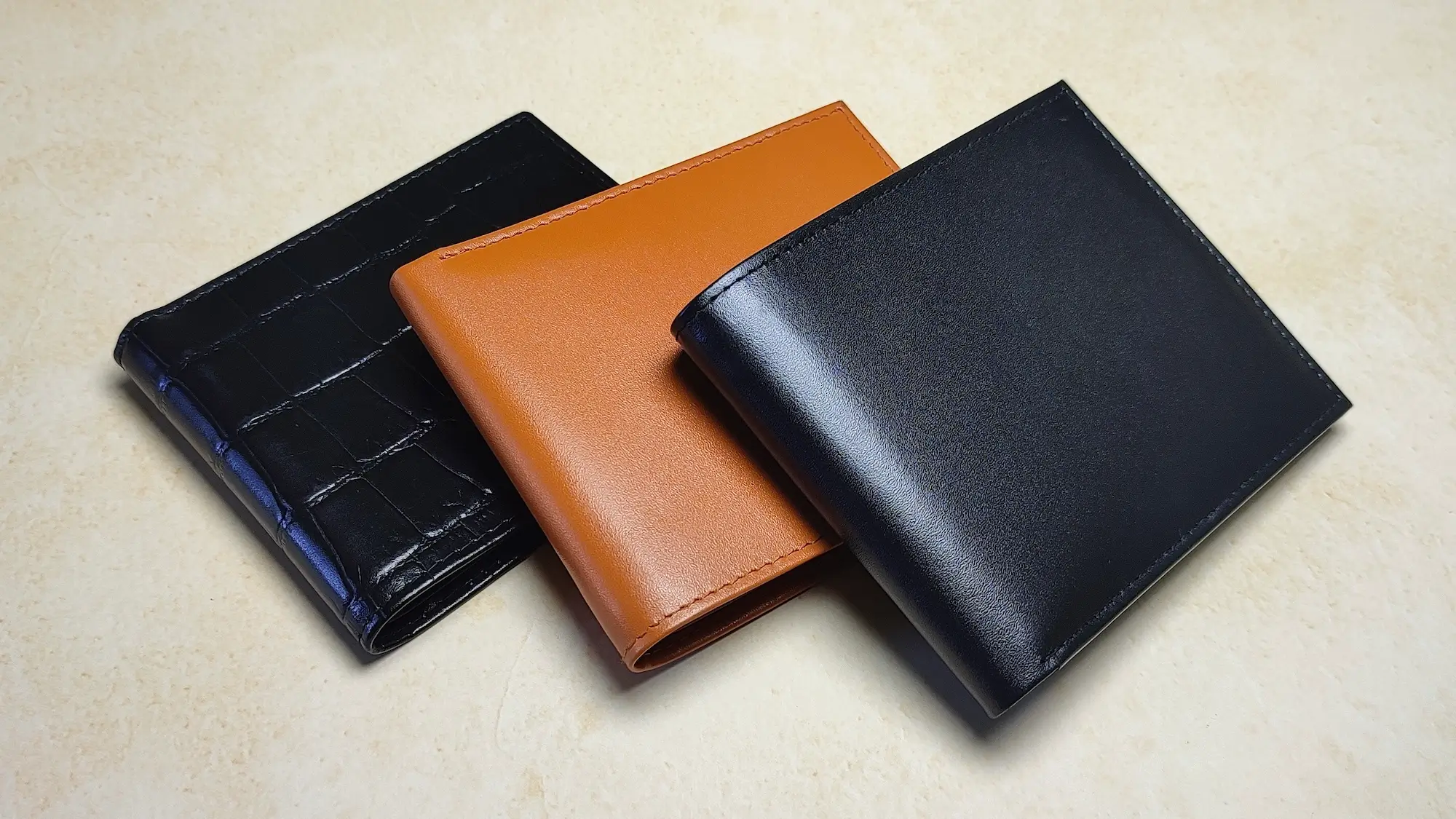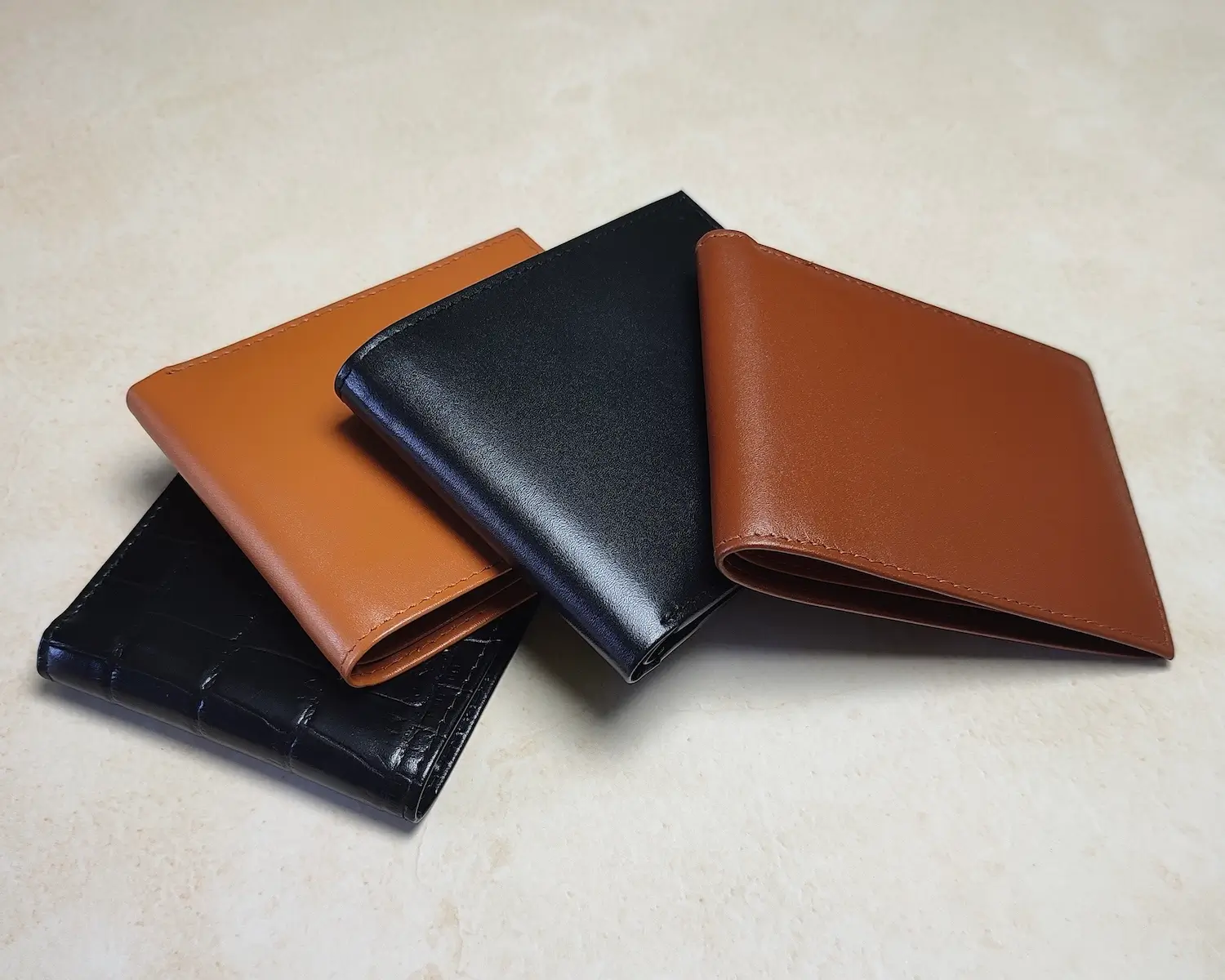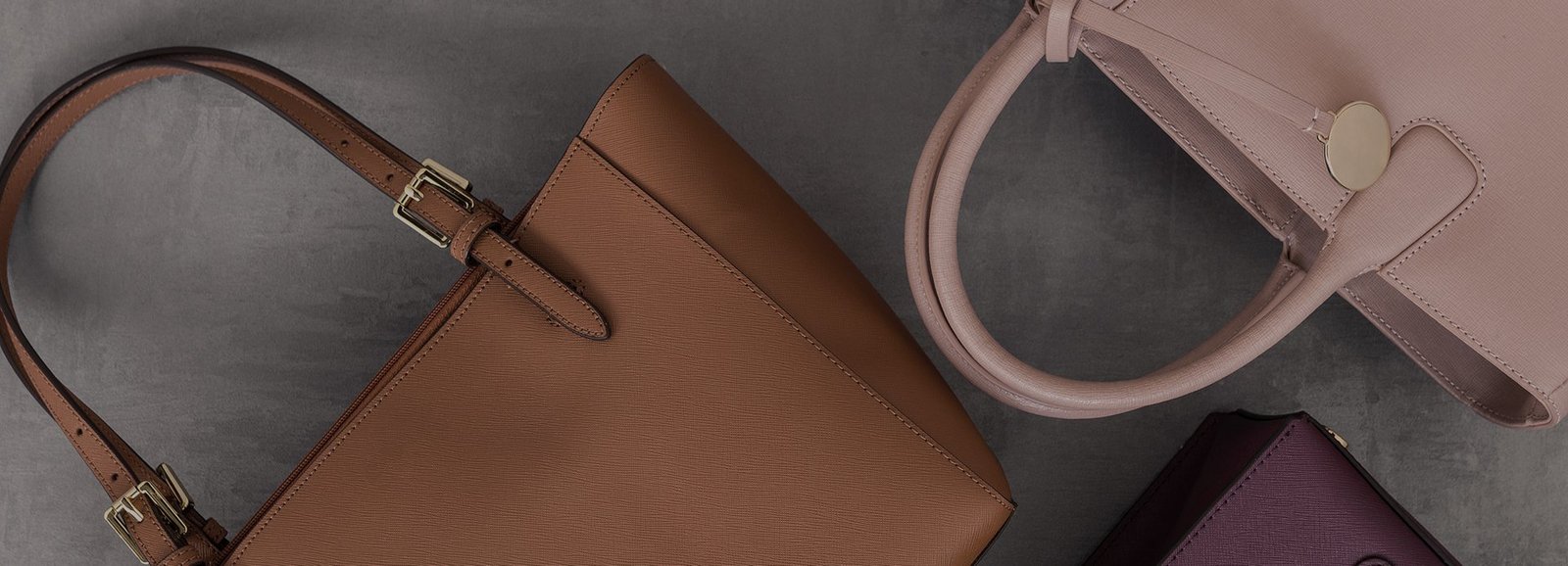Craftsmanship & Heritage
The Best Materials for a Leather Wallet: A Complete Guide
Introduction
A wallet is more than just a functional accessory; it’s a reflection of your personal style and a daily companion that endures frequent handling. The material of your wallet plays a crucial role in its durability, appearance, and practicality. Choosing the best material ensures your wallet not only looks great but stands the test of time.
This guide explores the top materials for leather wallets, their pros and cons, and how to select the perfect one for your needs.
Why Material Matters for a Leather Wallet
Durability and Longevity
A wallet is subjected to constant use, from holding cash and cards to enduring the wear and tear of daily handling. High-quality materials are essential for maintaining structural integrity and ensuring long-term usability.
Aesthetic Appeal
The choice of material directly impacts the wallet’s texture, color, and overall style. From the smooth elegance of full-grain leather to the bold patterns of exotic skins, materials define the visual appeal of a wallet.
Functionality
The material affects the wallet’s weight, flexibility, and practicality. Lightweight materials are ideal for slim wallets, while rugged options provide extra durability for frequent travelers or active lifestyles.
Types of Leather for Wallets
Leather remains the most popular choice for wallets due to its unmatched combination of durability and style. Each type of leather offers unique characteristics.
Full-Grain Leather
- Characteristics:
Full-grain leather is the highest-quality leather, retaining the natural grain of the hide. It is thick, strong, and develops a beautiful patina over time. - Pros:
- Extremely durable.
- Ages gracefully with a unique patina.
- Resistant to moisture and wear.
- Cons:
- Expensive.
- Requires regular conditioning to maintain quality.
- Best For:
- High-end wallets with a classic and timeless look.
Top-Grain Leather
- Characteristics:
Slightly sanded to remove imperfections, top-grain leather offers a smoother surface and is more affordable than full-grain leather. - Pros:
- Softer and more flexible.
- Affordable compared to full-grain leather.
- Stylish and sleek finish.
- Cons:
- Less durable than full-grain leather.
- Does not develop a patina.
- Best For:
- Modern wallet designs with a polished appearance.
Genuine Leather
- Characteristics:
Genuine leather is made from the lower layers of the hide and is often treated or embossed to resemble higher-quality leather. - Pros:
- Affordable.
- Accessible in a variety of designs.
- Cons:
- Less durable.
- Lacks the natural grain and strength of premium leather.
- Best For:
- Entry-level wallets or casual use.
Exotic Leathers
- Types:
Crocodile, ostrich, snakeskin, and lizard leathers are among the most sought-after exotic options. - Pros:
- Unique textures and patterns.
- Luxurious appeal.
- Extremely durable.
- Cons:
- Expensive and rare.
- Requires specialized care.
- Best For:
- Statement pieces and luxury wallets.
Alternative Materials for Leather Wallets
Leather alternatives have gained popularity for their ethical and innovative approaches, offering additional options for wallet materials.
Vegan Leather
- Characteristics:
Made from synthetic materials like PU or PVC, or plant-based alternatives such as cork or pineapple leaves. - Pros:
- Cruelty-free and eco-friendly options available.
- Affordable and widely available.
- Customizable in various textures and colors.
- Cons:
- Less durable than real leather.
- Can feel synthetic to the touch.
- Best For:
- Ethically conscious buyers seeking stylish options.
Suede
- Characteristics:
Suede is made from the underside of the hide, offering a soft and velvety texture. - Pros:
- Luxurious feel.
- Lightweight and flexible.
- Cons:
- Prone to stains and scratches.
- Requires regular maintenance.
- Best For:
- Fashion-forward designs and lightweight wallets.
Nubuck Leather
- Characteristics:
Nubuck is sanded on the outer layer of the hide, giving it a texture similar to suede but with greater durability. - Pros:
- Durable and resistant to wear.
- Soft yet rugged appearance.
- Cons:
- Requires waterproofing to prevent stains.
- Higher maintenance than smooth leather.
- Best For:
- Casual wallets with a rugged charm.
Factors to Consider When Choosing Wallet Material
Selecting the best material for your leather wallet involves balancing several key factors to suit your lifestyle, preferences, and budget.
Lifestyle Needs
Your daily routine and how you use your wallet greatly influence the material choice:
- Heavy Use: For wallets exposed to frequent handling, such as storing cash, cards, and receipts, full-grain leather is ideal due to its durability.
- Minimalist Needs: Slim wallets or cardholders made from lightweight materials like top-grain leather or vegan leather suit those seeking convenience and portability.
- Travel: If you need a spacious wallet for travel, durable materials like nubuck or exotic leather are excellent for withstanding wear and tear.
Budget Constraints
Your budget determines the type of material you can afford:
- Premium Choices: Full-grain leather and exotic leathers offer unmatched quality but come at a higher price.
- Mid-Range Options: Top-grain leather provides a balance between affordability and quality.
- Budget-Friendly Picks: Genuine leather and vegan leather are cost-effective without sacrificing style.
Maintenance Requirements
The ease of maintaining a wallet also depends on its material:
- Low Maintenance: Top-grain leather and PU-based vegan leather require minimal cleaning and conditioning.
- Moderate Maintenance: Full-grain leather needs occasional conditioning to retain its softness and shine.
- High Maintenance: Suede and nubuck demand specialized care to avoid stains and preserve their velvety textures.
Benefits of Premium Leather for Wallets
Investing in high-quality leather offers numerous advantages that enhance the value of your wallet over time.
Durability
Premium leather, such as full-grain or exotic leathers, is highly durable and can withstand years of daily use. It resists scratches, stretching, and general wear better than lower-grade materials.
Style Versatility
A premium leather wallet complements any outfit, whether formal or casual. Its timeless elegance ensures it remains a stylish accessory for years.
Personalized Aging
One of the unique traits of high-quality leather is its ability to develop a patina—a soft sheen and subtle color variation that adds character and beauty over time. This personalized aging enhances the wallet’s charm and value.
Drawbacks of Low-Quality Materials
While affordable options like genuine leather and faux leather have their appeal, they come with several limitations that may affect their longevity and appearance.
Short Lifespan
Lower-quality materials tend to wear out quickly. Genuine leather, for instance, may peel or crack, especially with frequent use or exposure to moisture.
Poor Aesthetic Appeal
Low-grade materials often lack the natural texture and luster of premium leather. Faux leather, while attractive initially, can look synthetic and wear down to reveal its base layers.
Maintenance Challenges
Lower-quality leather is more prone to stains, discoloration, and damage. Repairing such materials can be difficult, and they may not withstand rigorous cleaning.
Popular Wallet Styles and Ideal Materials
The design of a wallet often dictates the type of material best suited for its construction. Here are some common wallet styles and their recommended materials:
Bi-Fold Wallets
- Characteristics: Classic design with two folds, spacious for cash and cards.
- Ideal Materials: Full-grain leather for durability and timeless appeal, or top-grain leather for a sleeker look.
Tri-Fold Wallets
- Characteristics: Compact and foldable into three sections, offering ample storage.
- Ideal Materials: Flexible top-grain leather or nubuck for a lightweight yet rugged option.
Slim Cardholders
- Characteristics: Minimalist design for carrying essential cards.
- Ideal Materials: Vegan leather or top-grain leather for lightweight and sleek designs.
Travel Wallets
- Characteristics: Larger wallets with compartments for passports, tickets, and more.
- Ideal Materials: Durable full-grain leather or exotic leather for a luxurious and sturdy travel companion.
Conclusion
Choosing the best material for a leather wallet is about more than just aesthetics—it’s about finding a balance between quality, style, and functionality. Full-grain leather and exotic skins stand out as premium options for those seeking durability and luxury, while top-grain and vegan leathers cater to modern, budget-conscious buyers. By understanding the pros and cons of each material and considering your personal needs, you can select a wallet that complements your lifestyle and lasts for years.
FAQs About Materials for Leather Wallets
-
What is the most durable leather for a wallet?
Full-grain leather is the most durable option due to its thickness and natural grain. It resists wear and develops a beautiful patina over time. -
Are vegan leather wallets as durable as real leather?
While vegan leather wallets are cruelty-free and affordable, they are generally less durable than full-grain or top-grain leather. However, high-quality vegan leather can still last for years with proper care. -
How do I care for different leather materials?
- For full-grain and top-grain leather, condition occasionally to retain softness and prevent drying.
- For suede and nubuck, use a soft brush to clean and apply a waterproofing spray to prevent stains.
- For vegan leather, clean with a damp cloth and avoid exposure to extreme temperatures.
-
What is the best material for a luxury wallet?
Exotic leathers such as crocodile, ostrich, or snakeskin are considered the pinnacle of luxury due to their unique textures and high-quality craftsmanship. -
How can I identify high-quality leather in a wallet?
High-quality leather will feel soft and supple to the touch, with consistent grain and a rich aroma. Look for even stitching and well-finished edges as signs of superior craftsmanship.
FAQ : Frequently Asked Questions
The Best Materials for a Leather Wallet: A Complete Guide
Answer:
Full-grain leather is the most durable option due to its thickness and natural grain. It resists wear and develops a beautiful patina over time.
Answer:
While vegan leather wallets are cruelty-free and affordable, they are generally less durable than full-grain or top-grain leather. However, high-quality vegan leather can still last for years with proper care.
Answer:
- For full-grain and top-grain leather, condition occasionally to retain softness and prevent drying.
- For suede and nubuck, use a soft brush to clean and apply a waterproofing spray to prevent stains.
- For vegan leather, clean with a damp cloth and avoid exposure to extreme temperatures.
Answer:
Exotic leathers such as crocodile, ostrich, or snakeskin are considered the pinnacle of luxury due to their unique textures and high-quality craftsmanship.
Answer:
High-quality leather will feel soft and supple to the touch, with consistent grain and a rich aroma. Look for even stitching and well-finished edges as signs of superior craftsmanship.



